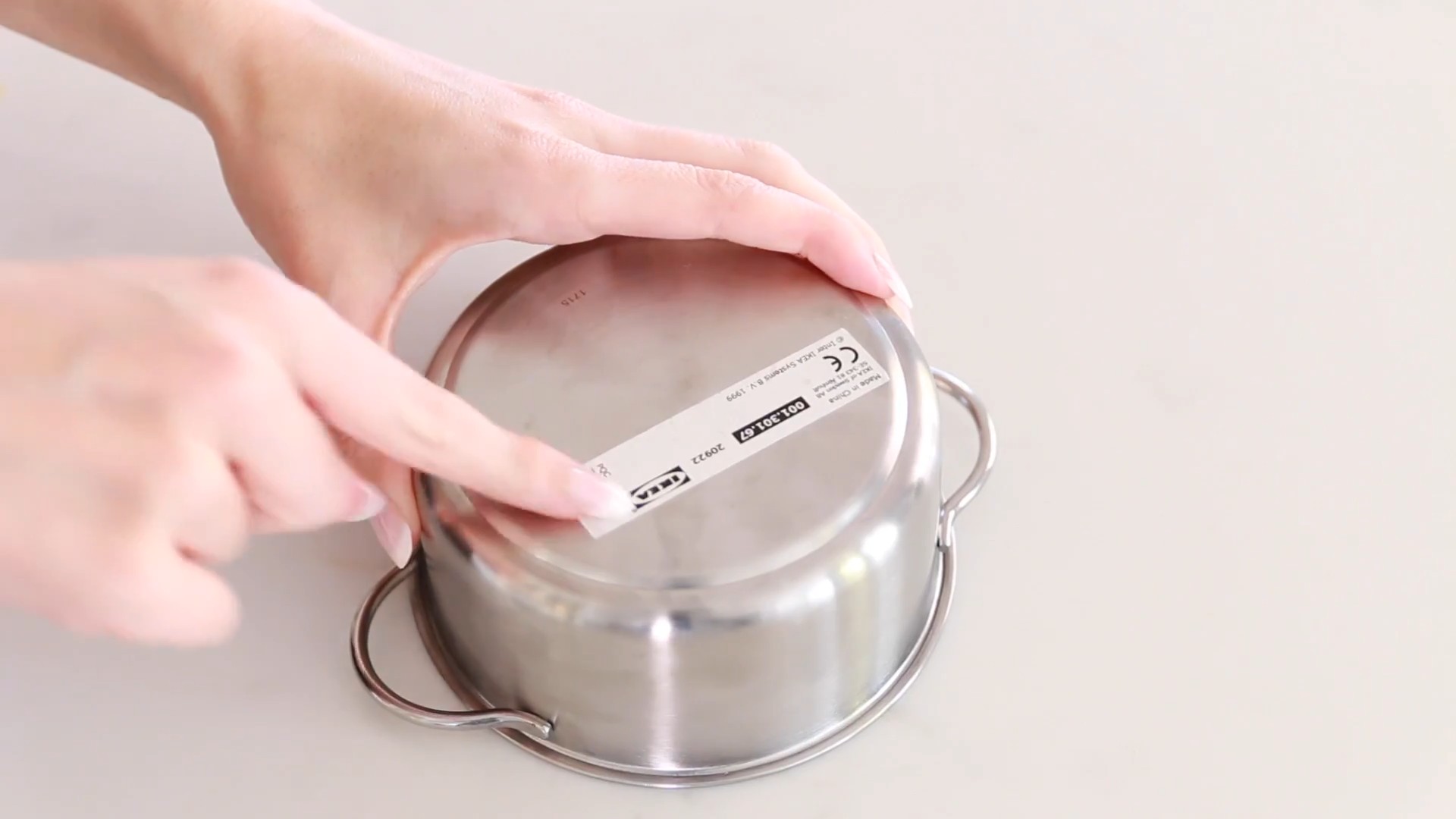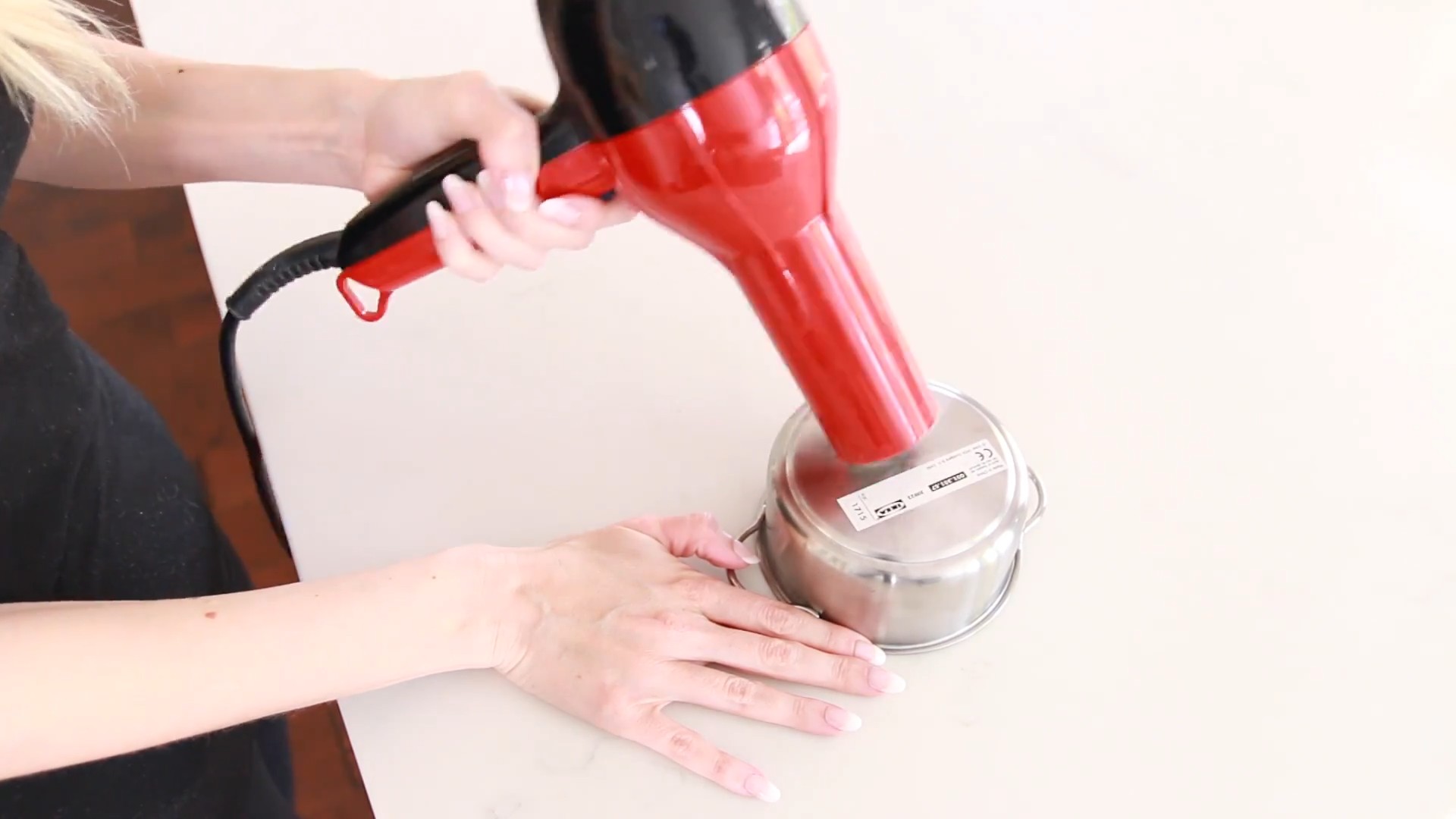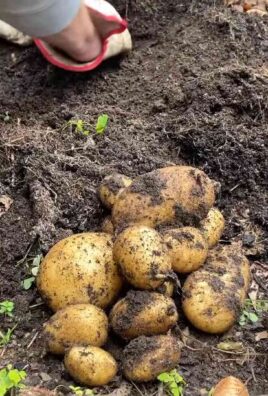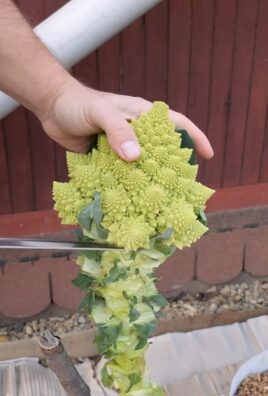Cleaning shortcuts – who doesn’t crave them? Let’s be honest, spending hours scrubbing and polishing isn’t exactly anyone’s idea of a fun weekend. For generations, people have sought clever ways to streamline their cleaning routines, from ancient Roman bathhouses employing ingenious water systems to our grandmothers’ reliance on time-tested vinegar solutions. The desire for a sparkling clean home without sacrificing precious time is a universal and enduring one.
I know I’m always on the lookout for ways to make my cleaning routine faster and more efficient. That’s why I’ve compiled this list of amazing cleaning shortcuts and DIY hacks that will revolutionize the way you tackle household chores. Imagine spending less time cleaning and more time doing the things you truly enjoy! These tips aren’t just about saving time; they’re about reclaiming your weekends and creating a healthier, happier living space with minimal effort. From tackling stubborn stains to banishing grime from hard-to-reach places, these DIY solutions are guaranteed to make your life easier. So, grab your cleaning supplies, and let’s dive into these game-changing cleaning secrets!

DIY Cleaning Hack: Revive Your Grout with Baking Soda and Vinegar!
Hey everyone! Tired of staring at dingy, discolored grout lines? I know I was! No matter how much I scrubbed, those stubborn stains just wouldn’t budge. But fear not, fellow DIY enthusiasts! I’ve discovered a super effective (and surprisingly easy) cleaning hack that will bring your grout back to life using just two common household ingredients: baking soda and vinegar. Get ready to say goodbye to grimy grout and hello to sparkling clean floors and tiles!
What You’ll Need:
Before we dive in, let’s gather our supplies. This is a pretty low-key project, so you probably already have most of these things on hand.
* Baking soda
* White vinegar
* An old toothbrush (or a grout brush if you have one)
* Spray bottle
* Water
* Paper towels or a clean cloth
* Optional: Rubber gloves (vinegar can be a bit harsh on sensitive skin)
* Optional: Small bowl or container for mixing
The Magic Formula: Baking Soda and Vinegar
The combination of baking soda and vinegar creates a fizzing action that helps to loosen dirt and grime embedded in the grout. Baking soda is a mild abrasive, while vinegar is a natural acid that helps to dissolve mineral deposits and soap scum. Together, they’re a powerful cleaning duo!
Step-by-Step Guide to Sparkling Grout:
Okay, let’s get down to business! Here’s how I tackled my grout cleaning project:
1. Prepare the Baking Soda Paste: In a small bowl, I mixed baking soda with just enough water to form a thick paste. You want it to be spreadable but not too runny. Think toothpaste consistency. I usually start with about 1/2 cup of baking soda and add water a tablespoon at a time until I get the right consistency.
2. Apply the Baking Soda Paste to the Grout: Using your fingers (or a small spatula), generously apply the baking soda paste to all the grout lines you want to clean. Make sure you really pack it in there! Don’t be shy – the more baking soda, the better the cleaning action. I found it helpful to work in small sections to prevent the paste from drying out too quickly.
3. Let the Baking Soda Sit: This is where patience comes in. Let the baking soda paste sit on the grout for at least 10-15 minutes. This allows the baking soda to penetrate the grime and start breaking it down. For really stubborn stains, you can even let it sit for up to 30 minutes. I usually use this time to catch up on emails or listen to a podcast.
4. Prepare the Vinegar Spray: While the baking soda is working its magic, fill your spray bottle with white vinegar. You can use it straight from the bottle – no need to dilute it.
5. Spray the Vinegar onto the Baking Soda: Now for the fun part! Spray the vinegar directly onto the baking soda-covered grout lines. You’ll immediately see a fizzing reaction as the vinegar reacts with the baking soda. This is exactly what we want! The fizzing helps to lift the dirt and grime from the grout.
6. Let the Fizzing Action Work: Allow the vinegar and baking soda to fizz for a few minutes (about 5-10 minutes should do the trick). This gives the mixture time to really loosen the dirt and grime.
7. Scrub the Grout: Grab your old toothbrush or grout brush and start scrubbing! Use firm, circular motions to scrub the grout lines. You’ll likely see the dirt and grime start to lift away. Don’t be afraid to put some elbow grease into it, especially for those really stubborn stains. I found that a grout brush with stiff bristles worked best for me, but an old toothbrush will definitely do the job in a pinch.
8. Rinse with Water: Once you’ve scrubbed all the grout lines, rinse the area thoroughly with clean water. You can use a sponge, a mop, or even a spray bottle filled with water. Make sure you remove all traces of the baking soda and vinegar mixture.
9. Dry the Area: Use paper towels or a clean cloth to dry the area completely. This will help prevent water spots and mildew growth.
10. Inspect and Repeat (If Necessary): Take a good look at your grout lines. If you still see some stubborn stains, repeat the process. Sometimes, it takes a couple of rounds to get the grout completely clean, especially if it’s been a while since you last cleaned it.
Dealing with Stubborn Stains:
Sometimes, even the baking soda and vinegar combo needs a little extra help. Here are a few tips for tackling those extra-stubborn stains:
* Make a Stronger Paste: For really tough stains, try making a paste with just baking soda and a few drops of hydrogen peroxide. The hydrogen peroxide adds extra cleaning power.
* Use a Stiffer Brush: If your toothbrush isn’t cutting it, try using a grout brush with stiffer bristles. These brushes are specifically designed to clean grout and can be found at most hardware stores.
* Steam Cleaning: If you have a steam cleaner, you can use it to blast away stubborn stains. The steam helps to loosen the dirt and grime, making it easier to scrub away.
* Commercial Grout Cleaners: As a last resort, you can try using a commercial grout cleaner. However, be sure to read the instructions carefully and test the cleaner in an inconspicuous area first to make sure it doesn’t damage your tiles.
Preventing Future Grout Stains:
Once you’ve got your grout sparkling clean, you’ll want to keep it that way! Here are a few tips for preventing future grout stains:
* Wipe Up Spills Immediately: The sooner you wipe up spills, the less likely they are to stain your grout.
* Ventilate Your Bathroom: Proper ventilation helps to prevent mildew growth, which can stain your grout. Run the exhaust fan while you shower and for at least 30 minutes afterward.
* Seal Your Grout: Sealing your grout creates a barrier that helps to prevent stains. You can purchase grout sealant at most hardware stores. Apply the sealant according to the manufacturer’s instructions. I usually reseal my grout every year or two.
* Regular Cleaning: Make it a habit to clean your grout regularly. A quick scrub with a mild cleaner every week or two can help prevent stains from building up.
A Few Extra Tips and Tricks:
* Test in an Inconspicuous Area: Before you start cleaning, test the baking soda and vinegar mixture in an inconspicuous area to make sure it doesn’t damage your tiles. While it’s generally safe for most tiles, it’s always better to be safe than sorry.
* Protect Your Skin: Vinegar can be a bit harsh on sensitive skin, so consider wearing rubber gloves while you’re cleaning.
* Work in Small Sections: I find it easier to work in small sections to prevent the baking soda paste from drying out too quickly.
* Don’t Mix Bleach and Vinegar: Never mix bleach and vinegar, as this can create toxic fumes.
* Be Patient: Cleaning grout can be a bit time-consuming, but the results are worth it! Don’t get discouraged if it takes a couple of rounds to get your grout completely clean.
Why This Hack Works So Well:
The beauty of this hack lies in the simple chemistry between baking soda and vinegar. The baking soda, a mild alkali, reacts with the acetic acid in vinegar to produce carbon dioxide gas (those lovely bubbles!), water, and sodium acetate. This reaction helps to lift dirt and grime from the porous surface of the grout. Plus, both baking soda and vinegar are natural and non-toxic, making them a safe and eco-friendly alternative to harsh chemical cleaners.
My Personal Experience:
I was honestly amazed at how well this cleaning hack worked. My grout was looking pretty sad before, but after just one application of the baking soda and vinegar mixture, it looked significantly brighter and cleaner. I had to repeat the process a couple of times on some of the more stubborn stains, but overall, I was thrilled with the results. And the best part is, I already had all the ingredients on hand!
So there you have it! My go-to DIY cleaning hack for reviving grout. Give it a try and let me know what you think! I’m confident that you’ll be amazed at the results. Happy cleaning!

Conclusion
So, there you have it! This simple yet incredibly effective cleaning shortcut has the potential to revolutionize your cleaning routine. Forget spending hours scrubbing and stressing over stubborn grime. This DIY trick, using readily available household ingredients, offers a faster, cheaper, and often more effective alternative to harsh chemical cleaners.
Why is this a must-try? Because it saves you time, money, and effort. Imagine reclaiming those precious weekend hours you usually dedicate to cleaning. Think about the savings you’ll accumulate by ditching expensive, store-bought cleaners. And consider the peace of mind knowing you’re using a gentler, more environmentally friendly solution in your home.
But the benefits don’t stop there. This cleaning shortcut is incredibly versatile. While we’ve focused on [mention specific area cleaned in the main article, e.g., oven cleaning], the principles can be adapted for various cleaning tasks around the house. For instance, you can adjust the ratio of ingredients to tackle different levels of grime. For lighter cleaning, dilute the solution further. For tougher stains, create a thicker paste and let it sit for a longer period.
Variations to Explore:
* Essential Oil Boost: Add a few drops of your favorite essential oil, like lemon or tea tree, for an extra burst of freshness and added antibacterial properties.
* Vinegar Power: For particularly stubborn stains, consider adding a splash of white vinegar to the mixture. Remember to test on an inconspicuous area first, especially on delicate surfaces.
* Baking Soda Scrub: For a more abrasive scrub, sprinkle baking soda directly onto the surface after applying the cleaning solution. This is particularly effective for removing baked-on food residue.
* Lemon Juice Brightener: Lemon juice can act as a natural brightener. Add a squeeze to the solution to help remove discoloration and leave surfaces sparkling.
We are confident that once you try this cleaning shortcut, you’ll be amazed by the results. It’s a game-changer for anyone looking to simplify their cleaning routine and achieve a sparkling clean home without breaking the bank or resorting to harsh chemicals.
Don’t just take our word for it – give it a try! We encourage you to experiment with the variations and find what works best for your specific needs and surfaces. The beauty of this DIY approach is its adaptability.
We’re eager to hear about your experiences. Share your before-and-after photos, your favorite variations, and any tips or tricks you discover along the way in the comments section below. Let’s build a community of cleaning enthusiasts who are passionate about finding smarter, simpler, and more sustainable ways to keep our homes clean and healthy. Embrace the power of this cleaning shortcut and unlock a cleaner, brighter, and more enjoyable living space.
Frequently Asked Questions (FAQs)
What exactly is the “cleaning shortcut” you’re referring to?
The cleaning shortcut we’ve been discussing involves using a simple, homemade cleaning solution made from readily available household ingredients like [mention key ingredients, e.g., baking soda, dish soap, and water]. This mixture is designed to effectively remove grime, grease, and stains from various surfaces, offering a faster and more eco-friendly alternative to commercial cleaners. The specific application and ratios may vary depending on the surface being cleaned and the severity of the grime.
Is this cleaning shortcut safe for all surfaces?
While this cleaning shortcut is generally safe for most surfaces, it’s always best to test it on an inconspicuous area first, especially when dealing with delicate materials like natural stone, painted surfaces, or certain types of fabrics. Avoid using abrasive scrub brushes on easily scratched surfaces. The acidity of vinegar, if used, can damage some surfaces, so use it sparingly and always dilute it. If you are unsure, consult the manufacturer’s instructions for the surface you are cleaning.
How long should I let the cleaning solution sit on the surface before wiping it off?
The amount of time you let the cleaning solution sit on the surface depends on the severity of the grime. For light cleaning, a few minutes may be sufficient. For tougher stains or baked-on residue, you may need to let it sit for 15-30 minutes, or even longer. Keep an eye on the area and reapply the solution if it starts to dry out.
Can I use this cleaning shortcut on [Specific surface, e.g., stainless steel appliances]?
Yes, this cleaning shortcut can be used on stainless steel appliances. However, it’s important to wipe in the direction of the grain to avoid streaks. For extra shine, you can follow up with a stainless steel cleaner or a microfiber cloth. Always test in an inconspicuous area first.
What if the cleaning shortcut doesn’t remove all the grime?
If the cleaning shortcut doesn’t completely remove all the grime on the first try, don’t give up! Try these tips:
* Reapply the solution: Sometimes, a second application is all it takes to loosen stubborn grime.
* Increase the concentration: If you’re using a diluted solution, try increasing the concentration of the cleaning agents.
* Use a scrub brush: For tough stains, a scrub brush can help to dislodge the grime. Be careful not to scratch delicate surfaces.
* Let it sit longer: Allowing the solution to sit for a longer period can help to break down the grime.
* Try a different variation: Experiment with adding vinegar, baking soda, or lemon juice to the solution.
So, there you have it! This simple yet incredibly effective cleaning shortcut has the potential to revolutionize your cleaning routine. Forget spending hours scrubbing and stressing over stubborn grime. This DIY trick, using readily available household ingredients, offers a faster, cheaper, and often more effective alternative to harsh chemical cleaners.
Why is this a must-try? Because it saves you time, money, and effort. Imagine reclaiming those precious weekend hours you usually dedicate to cleaning. Think about the savings you’ll accumulate by ditching expensive, store-bought cleaners. And consider the peace of mind knowing you’re using a gentler, more environmentally friendly solution in your home.
But the benefits don’t stop there. This cleaning shortcut is incredibly versatile. While we’ve focused on [mention specific area cleaned in the main article, e.g., oven cleaning], the principles can be adapted for various cleaning tasks around the house. For instance, you can adjust the ratio of ingredients to tackle different levels of grime. For lighter cleaning, dilute the solution further. For tougher stains, create a thicker paste and let it sit for a longer period.
Variations to Explore:
* Essential Oil Boost: Add a few drops of your favorite essential oil, like lemon or tea tree, for an extra burst of freshness and added antibacterial properties.
* Vinegar Power: For particularly stubborn stains, consider adding a splash of white vinegar to the mixture. Remember to test on an inconspicuous area first, especially on delicate surfaces.
* Baking Soda Scrub: For a more abrasive scrub, sprinkle baking soda directly onto the surface after applying the cleaning solution. This is particularly effective for removing baked-on food residue.
* Lemon Juice Brightener: Lemon juice can act as a natural brightener. Add a squeeze to the solution to help remove discoloration and leave surfaces sparkling.
We are confident that once you try this cleaning shortcut, you’ll be amazed by the results. It’s a game-changer for anyone looking to simplify their cleaning routine and achieve a sparkling clean home without breaking the bank or resorting to harsh chemicals.
Don’t just take our word for it – give it a try! We encourage you to experiment with the variations and find what works best for your specific needs and surfaces. The beauty of this DIY approach is its adaptability.
We’re eager to hear about your experiences. Share your before-and-after photos, your favorite variations, and any tips or tricks you discover along the way in the comments section below. Let’s build a community of cleaning enthusiasts who are passionate about finding smarter, simpler, and more sustainable ways to keep our homes clean and healthy. Embrace the power of this cleaning shortcut and unlock a cleaner, brighter, and more enjoyable living space.
Frequently Asked Questions (FAQs)
What exactly is the “cleaning shortcut” you’re referring to?
The cleaning shortcut we’ve been discussing involves using a simple, homemade cleaning solution made from readily available household ingredients like [mention key ingredients, e.g., baking soda, dish soap, and water]. This mixture is designed to effectively remove grime, grease, and stains from various surfaces, offering a faster and more eco-friendly alternative to commercial cleaners. The specific application and ratios may vary depending on the surface being cleaned and the severity of the grime.
Is this cleaning shortcut safe for all surfaces?
While this cleaning shortcut is generally safe for most surfaces, it’s always best to test it on an inconspicuous area first, especially when dealing with delicate materials like natural stone, painted surfaces, or certain types of fabrics. Avoid using abrasive scrub brushes on easily scratched surfaces. The acidity of vinegar, if used, can damage some surfaces, so use it sparingly and always dilute it. If you are unsure, consult the manufacturer’s instructions for the surface you are cleaning.
How long should I let the cleaning solution sit on the surface before wiping it off?
The amount of time you let the cleaning solution sit on the surface depends on the severity of the grime. For light cleaning, a few minutes may be sufficient. For tougher stains or baked-on residue, you may need to let it sit for 15-30 minutes, or even longer. Keep an eye on the area and reapply the solution if it starts to dry out.
Can I use this cleaning shortcut on [Specific surface, e.g., stainless steel appliances]?
Yes, this cleaning shortcut can be used on stainless steel appliances. However, it’s important to wipe in the direction of the grain to avoid streaks. For extra shine, you can follow up with a stainless steel cleaner or a microfiber cloth. Always test in an inconspicuous area first.
What if the cleaning shortcut doesn’t remove all the grime?
If the cleaning shortcut doesn’t completely remove all the grime on the first try, don’t give up! Try these tips:
* Reapply the solution: Sometimes, a second application is all it takes to loosen stubborn grime.
* Increase the concentration: If you’re using a diluted solution, try increasing the concentration of the cleaning agents.
* Use a scrub brush: For tough stains, a scrub brush can help to dislodge the grime. Be careful not to scratch delicate surfaces.
* Let it sit longer: Allowing the solution to sit for a longer period can help to break down the grime.
* Try a different variation: Experiment with adding vinegar, baking soda, or lemon juice to the solution.
How does this cleaning shortcut compare to commercial cleaners?
This cleaning shortcut offers several advantages over commercial cleaners:
* Cost-effective: It’s significantly cheaper to make your own cleaning solution than to buy commercial cleaners.
* Eco-friendly: It reduces your reliance on harsh chemicals that can be harmful to the environment.
* Safer: It’s generally safer for your family and pets, as it doesn’t contain harsh chemicals that can cause irritation or allergic reactions.
* Customizable: You can customize the solution to suit your specific needs and preferences.
However, commercial cleaners may be more effective for certain types of stains or surfaces. It’s important to weigh the pros and cons of each option before making a decision.
Can I store the leftover cleaning solution?
Yes, you can store the leftover cleaning solution in a sealed container. Be sure to label the container clearly so you don’t accidentally mistake it for something else. The solution should be good for several weeks. However, it’s best to make a fresh batch each time for optimal effectiveness.
What are some other uses for this cleaning shortcut?
Beyond [mention specific area cleaned in the main article, e.g., oven cleaning], this cleaning shortcut can be used for a variety of other cleaning tasks, including:
* Cleaning countertops
* Cleaning sinks and faucets
* Cleaning bathroom tiles
* Cleaning shower doors
* Cleaning stovetops
* Cleaning microwaves
* Cleaning floors (test in an inconspicuous area first)
The versatility of this cleaning shortcut makes it a valuable addition to any cleaning arsenal.
Is there anything I should avoid mixing with this cleaning shortcut?
It’s important to avoid mixing this cleaning shortcut with certain chemicals, such as bleach. Mixing bleach with other cleaning agents can create toxic fumes that can be harmful to your health. Always use caution when mixing cleaning products and follow the manufacturer’s instructions carefully.
What if I have allergies or sensitivities to any of the ingredients?
If you have allergies or sensitivities to any of the ingredients in this cleaning shortcut, such as baking soda or vinegar, it’s best to avoid using it. You can try substituting other ingredients or using a different cleaning method altogether. Always consult with your doctor or allergist if you have any concerns.




Leave a Comment